#Quentin Tarantino's favorite scene
Text
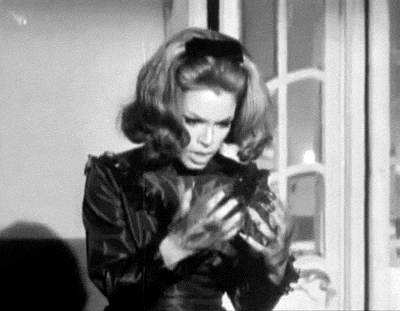
La loba | 1965
#La loba#Kitty de Hoyos#Rafael Baledón#werewolf#transformation#practical effects#horror movies#horror#mexican horror#hammersmith horror#monster movie#Quentin Tarantino's favorite scene
492 notes
·
View notes
Text
40 LOOKS DAMN GOOD
I saw this on Twitter and thought it'd be fun to do here as a mini celebration. Interaction has been so dead on here for everyone, it'd be fun to liven it back up! Everyone feel free to play along!
Favorite Movie(s)
The Last Duel! I love that movie. Blackkklansman is the runner up.

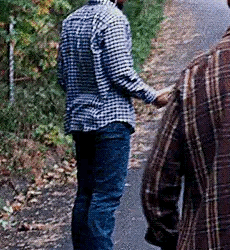
I actually don't care for most of his other movies at all in terms of the movie itself. 65, The Report, and Logan Lucky were decent, but definitely second tier.
Favorite Character(s)
Jacques, Flip, and Mills
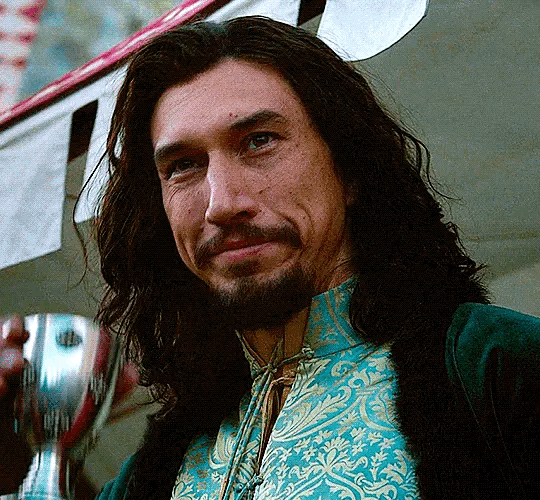
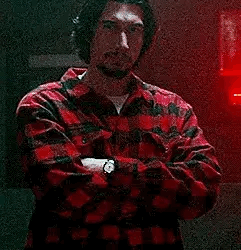
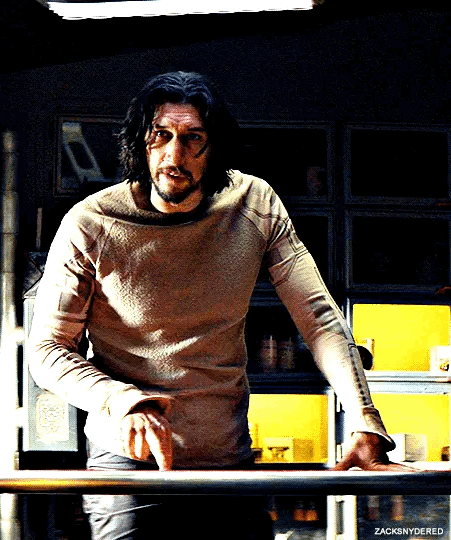
Favorite Co-Star(s)
Ben Affleck blows absolutely everyone else out of the water! "Come In! Take your pants off!"
Bill Murray and John David Washington are runners up, and I loved Jeremy Irons in Gucci.
Favorite Love Interest(s)
None so far! Rey and Hanna are my absolute least favorites. I hate them, honestly. Jodie Cromer was my favorite female lead in one of his movies. Lady Gaga and Marion Cottilard were alright too. I like Scarlett Johannson the best as a stand alone actress, but I hated her character in Marriage Story. I anticipate liking Aubrey Plaza
Favorite Scene(s)
Jousting and kicking ass are hard to beat!
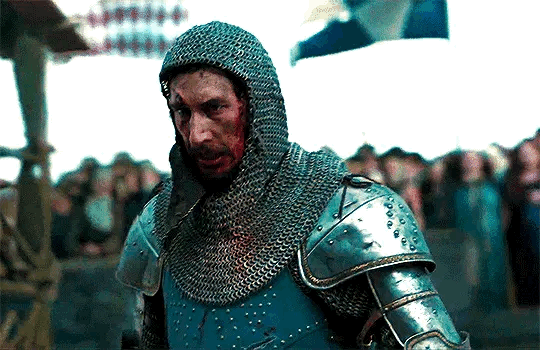

Favorite Sex Scene(s)
All the scenes from Last Duel! I don't care how offensive that is!




This scene from The Man Who Killed Don Quixote.
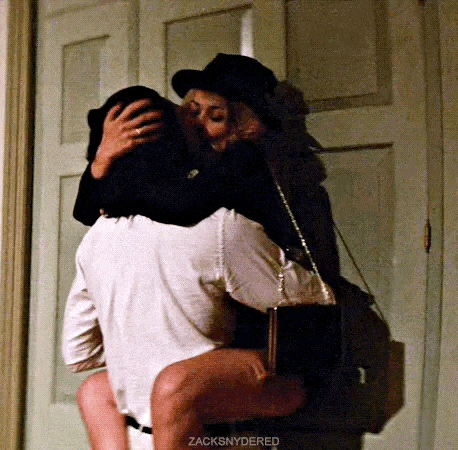
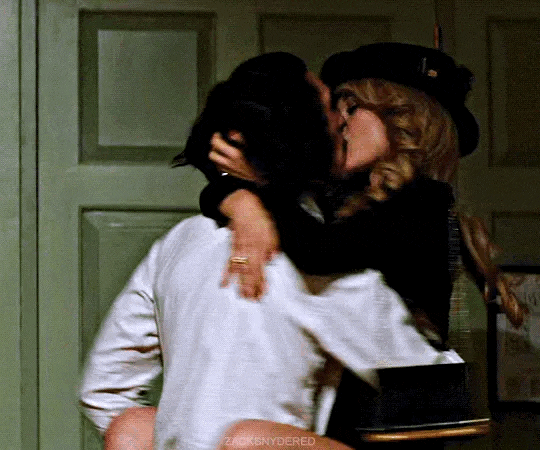
Girls seasons 5 and 6 were hard to beat. The couch scene in season 5 is pretty nice.
Favorite SNL Skit(s)
Slow for obvious reasons.
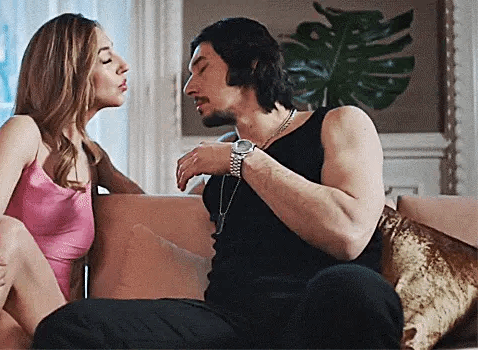
Undercover Boss Part 2

Favorite Line(s)
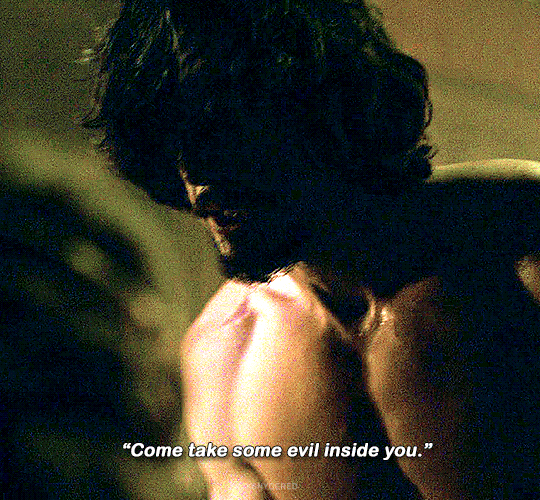
Dream Role(s)
I got a Knight with Jacques and an Action Hero with Mills, both of which were high on my list. I'd love to see him as a Vampire, a Dark Victorian Gentleman, an Old West Gunfighter, an Adventurer, and a John Wick style Hitman or Action Hero.
Oh, and he needs to be his actual age and not have goddamn face prosthetics, altered hairlines, or terrible fucking haircuts!

Dream Co-Star(s)
Love Interests: Angelina Jolie, Kate Winslet, Margot Robbie, Ana De Armas, and Lily Rose Depp for size kink purposes.
Co-Stars: Another hot guy like Goran Visnjic or Gerard Butler. Keanu Reeves would also be a blast.
Directors: Ridley Scott (again), Clint Eastwood, Tim Burton, Robert Eggars, Quentin Tarantino.
Favorite Photoshoot(s)

Favorite Candid(s)

Favorite Red Carpet Appearance(s)
Venice takes the cake!

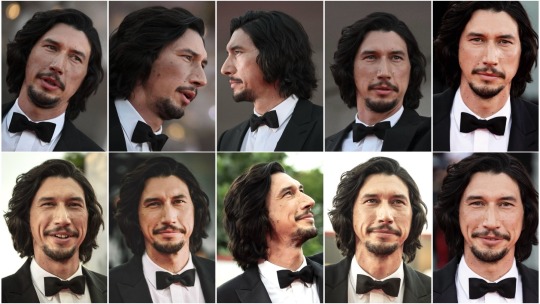
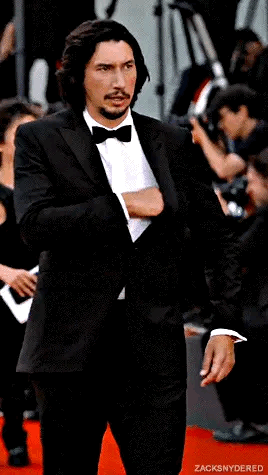
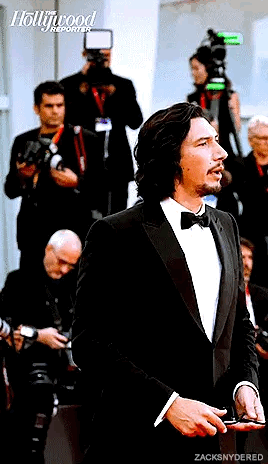

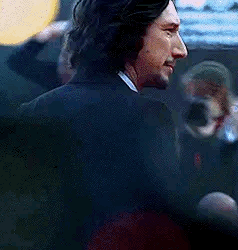
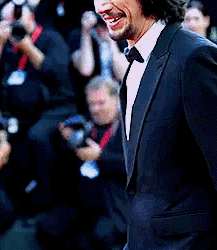
Favorite Interview(s)
"Fuck you. I don't know."
"I hated this. Goodbye."

Favorite Moment(s) of Your Choice



105 notes
·
View notes
Text
So @doyou000me sent me an ask about the film making of Love for Love's Sake (which I have learned is based on a novel and now I'm very interested in reading it lol) so having watched the currently available episodes the big thing I noticed was the shows use of Aspect Ratio.
"In simple terms, the aspect ratio of a movie is how wide the frame of the movie is versus how tall it is, usually expressed as a ratio. For example, most TVs and computer monitors are 1.77:1 (more often expressed on consumer packaging as 16:9), which means the screen itself is 1.77 times as wide as it is tall. The higher the first number in this ratio is, the wider the screen will be." (source)
I know, nerd math.
Basically you know those black bars you sometimes see on the top and bottom of the screen when watching a film or tv show? That's a director filming in a specific aspect ratio:

(source)
Film makers use aspect ratios in a ton of ways, there's a lot of examples out there from Hateful Eight (Quentin Tarantino), and Dark Knight (Christopher Nolan) where the former used aspect ratio to invoke the film making style of old westerns, while Nolan used a taller aspect ratio for fight/action scenes to give the scene more physical impact.
A recent example that I've seen that I think applies really well to Love for Love's Sake is Marry My Husband:


See how the first scene has black bars above and below? The director is using a different aspect ratio than in the second shot (these are both taken from ep01). What does this signify in the story?
Flashbacks. Flashbacks in Marry My Husband are always filmed in a different aspect ratio than scenes in the "present" storyline of the show. Perfect Marriage Revenge also uses aspect ratios this way.
Love for Love's Sake does something similar but instead of flashbacks it uses aspect ratio to denote between "worlds".
The game world is filmed in a longer aspect ratio than the "real" world which is filed in a different ratio (not a standard full screen but it does have a taller ratio than the game world):

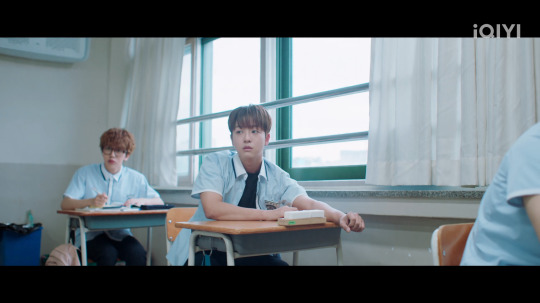
This, so far, has been consistent in the four episodes that are out. We have another return to the "real" world in I believe ep03 and we see this same aspect ratio dynamic.
Another thing I noticed is the "real" world's color saturation is much higher and warmer than the "game" world, but it's also (ironically) much more enclosed - this could honestly be a story choice or a budget issue - and boxed in. Something I don't see discussed a lot in terms of cinematography in BL is the use of Lines and Shapes in film and how they add to the composition of a shot.
I really like this video on the subject though it focuses mostly on animation it's still relevant:
youtube
Now if you look at the "real" world scene in Love for Love's Sake we see that the protagonist, before we even know who he is, or anything about him, is in a highly saturated room, warmly lit, but also boxed in:

The warmer saturation denotes a sense of intimacy, which makes sense in a bar setting, but the boxed in frame around him gives us a sense of tightness, tension even, maybe a sense that he feels trapped. We later learn through dialogue he's unhappy with his life and unhappy with the way the novel story he read has played out.
Then, when the scene transitions into the "game" world, the protagonist is in a different aspect ratio, the color grading is now more desaturated and has a higher blue hue to it, the character is also in an open space and filmed front forward facing instead of from behind:
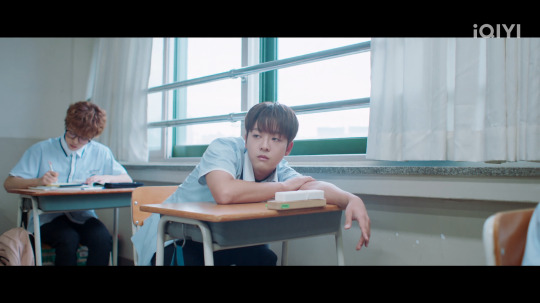
This all works well because the audience knows, even before the character does, they are in another "world" and its very different from their own. It creates to specific aesthetics which help set the worlds apart from one another.
For more on color theory, this is one of my favorite videos on the topic which has more to do with like, hue and saturation rather than "the blue curtains mean xyz" which is a singular and narrative heavy way to focus on color theory instead of how color adds to the tone, emotion, and world building of a piece of media.
youtube
I think the first episode of Love for Love's Sake is the best filmed of the episodes so far, the budget starts to chip away in other episodes but I do want to give them their roses b/c they do work within their budget well. There's a lot of interesting visuals used especially with the game pop ups that I really like, and some nice camera work. The editing is a bit weak at times but there's been some good choices too.
I also really liked the scene with Yeo Woon running and how his feet lit up and how that aligned with his affection points going up. The editing for that was well done.
So yeah, those are my film making thoughts on the show for now lol
Check out other posts in the series:
Film Making? In My BL? - The Sign ep01 Edition | Aspect Ratio in Love for Love's Sake | Cinematography in My BL - Our Skyy2 vs kinnporsche, 2gether vs semantic error, 1000 Stars vs The Sign | How The Sign Uses CGI
[like these posts? drop me a couple pennies on ko-fi]
#love for love's sake#kbl#chaos pikachu speaks#spot my kofi some coins if y'all like these posts lmao#also love for loves sake is cute as hell I'm into it#its a bit slow but last episode picked up and it's very charming#chaos pikachu metas#also if you wanna have a fun time watch any video on transformers the last knight and learn how to NOT use aspect ratios lmao#god that was such a frustrating thing to witness#Youtube#pikachu's bl film series
67 notes
·
View notes
Text
Goncharov, Star Wars, Stonewall, and Disco, and the 1970s: an epiphany.
ETA: This is a discussion of Goncharov as a meme and how it relates to Queer culture, therefore I am not tagging it with the “unreality” tag. Goncharov is not a real film, but that doesn’t mean it isn’t important; for reasons I will now explain.
I may be going crazy, but I think I am on to something regarding the true meaning of the whole Goncharov phenomenon, and it's kind of related to Vaporwave and the image that people who didn't grow up in the 1980s or early 1990s (or who have hazy memories of it from their earliest childhood) have enshrined it in the "aesthetic" of vaporwave. But while the themes of Vaporwave are tied to capitalism and consumerism, the "aesthetic" of the 1970s has very different associations.
The whole 70s-to-80s transitional vibe is a favorite topic of mine: right before the Muskrat bought twitter, I tweeted a whole thread about how Panos Cosmatos channels that whole vibe better than nearly any director I've ever seen. (Yes, even Quentin Tarantino - fight me.)
People are watching the new Star Wars media, which are all based around the Original Trilogy and therefore have sort of the same 70s "aesthetic look" of the time in which those movies were made. George Lucas was incorporating and repurposing as much regular stuff that existed in the 1970s that he could, and it contributed to his "used, lived in future" vibe that I think people really glommed onto when they saw the films.
For example: Aunt Beru's outfit from the first film looks like something the actress could have worn on the street in 1977 without anyone giving her a second glance.

People all over the film (but particularly in the scenes on Tatooine) were wearing regular clothes and then making them over or putting accessories over them to make them look futuristic and alien; "Star Wars Bounding" before that was really even a thing. Their regular 1970s street clothes.
This is related to Goncharov because: people are watching Andor and The Mandalorian, and they're starting to ask "what happened to the 1970s aesthetic? Why don't we bring that back?"
Even more than the 60s and the 80s were at various points, the 70s have for a long time been a punchline for bad taste, but there's something more sinister to it beyond merely sneering at the outdated fashion of a previous decade. And it hit me while I was watching this video about the rise of Disco and how Disco's origins were connected with the Stonewall Riots.
The joke about the Goncharov film hoax is how it's a "forgotten film" and about "analyzing the themes of Goncharov." About themes of homoeroticism, about two men (one of them a Discotheque owner on the run from a repressive regime) and two women who are in love, all of whom are unable to consummate that love, because of toxic masculinity and cultural expectations. About clocks being a frequent and repeating symbol - about the characters’ time running out. And the film basically disappearing from public knowledge and being forgotten for decades because these themes were "ahead of their time." (All of this originating from a post about a pair of knockoff boots.)
Because this is a metaphor for the LGBTIQ experience in the 1970s if ever there was one. About a time when an intersection of Queer-BIPOC culture proudly asserted itself for a single shining moment in time - then was eventually subject to both a bigoted, racist backlash and a horrific epidemic so damaging and deadly that we're still analyzing the human cost and the effect it had on society as a whole. Queer culture exploded onto the scene in the 1970s - and then its time suddenly ran out. Or was cut short.
Goncharov - or rather, the spirit and the moment in time that it represents - wasn't "forgotten." It was buried. First under a racist, homophobic/transphobic backlash, then by the malignancy of Reaganism and the AIDS virus that Reagan and his policies enabled to spread and kill thousands. Under the sneering condescension and bigotry of the people who want this spirit to stay buried.
But this spirit is unkillable. Tumblr just gave this spirit a name: Goncharov.
This same spirit is in Andor, to a point - because Queer culture is being actively repressed by the usual bigots and fascists, and Star Wars in general has a running theme of resisting oppression, and it is firmly anchored to its 1970s roots despite taking place "a long time ago, in a galaxy far, far away." Spoiler warning for the Andor season finale: but it was impossible for me to see the scenes of rebellion and not flash back on this recent tweet from Dan Savage in the wake of the Club Q shooting:

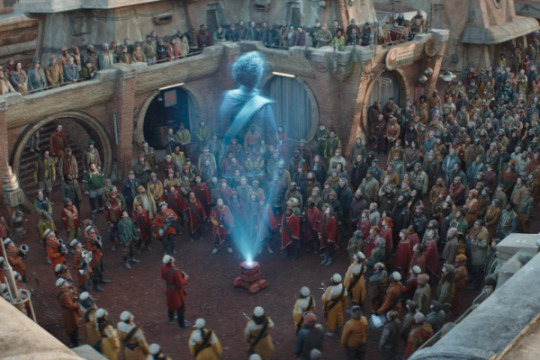
("Out of the bars, into the streets!")
One of the things I think about all the time is what would have been if the right wing bigoted backlash had been turned back, and how things might be different if Reaganism and the AIDS crisis had never happened. What our culture might have become. How much further ahead we might be than we are now.
We're still facing that same toxic right wing backlash right now, but it's our duty to resist and survive however we can, hoping that this time we might turn the tide.
Stonewall lives. Disco lives. Goncharov lives. Long live the Rebellion.
#Goncharov#Star Wars#Andor#Queer Culture#Disco#lgbtiq+ rights#Goncharov Lives#Discussion of Goncharov as a meme
439 notes
·
View notes
Text
Regarding the argument that the “movie star” is a dying concept in today’s film scene, based on what I’ve read so far, I feel that people are approaching this topic with a black-or-white perspective. I do agree that for entertainment in general today, the stars have become less important when compared to the characters and the franchises themselves. And this goes beyond superhero fiction, all entertainment fields are facing this phenomenon. For example, Jessie Buckley, who starred in the A24 horror film “Men”, despite being the star of the game “The Devil in Me”, was overshadowed by the fact that people were more interested by the franchise itself (The Dark Pictures Anthology).
It’s sorta like the “death of the auteur director” argument, except now it’s the actors facing their metaphorical death. Audiences are now viewing actors with a more critical eye since, because adaptations and continuations have become way more common, they’re viewing actors as more like the representatives of the character they’re playing. They’re only there to portray the character and get them right, not so much to be the center of attention.
That’s essentially what Quentin Tarantino was arguing, and honestly, it’s not a completely negative argument. This just tells me that people want their favorite characters to be portrayed well and “correct”, regardless of who the performer is. And sometimes, this could be a good thing as certain actors who don’t have A-list credentials can suddenly skyrocket to fame if they do a good job performing a certain character (example: Tom Holland when he got cast as Spider-Man).
Now, going back to my main point, even though I agree that the entertainment scene has changed, I don’t necessarily agree that the expectations have changed as well. Like I wrote earlier, audiences still expect a good performance. Tom Holland’s career would be dead in the water if he fucked up his portrayal of Spider-Man. What I’m trying to get at is that even if the “star” concept is dead, the actor is still important but that they can’t just skate by on their name recognition anymore. And I don’t think that’s a completely negative thing! Just to list some examples of what I mean by this:
1) Oscar Isaac received tons of critical acclaim in his portrayal of Marc Spector/Steven Grant. Even though people were watching for Moon Knight, Oscar Isaac himself still received just as much attention from the viewers because of how great his acting was.
2) For a more recent example, Jenna Ortega is getting a lot of praise for her portrayal of Wednesday Addams.
3) The entire cast of “House of the Dragon” received massive praise. In fact, I saw that Paddy Considine was getting a lot of Emmy buzz, which I wholeheartedly agree with.
4) John Cena (yes, I’m using Cena as an example) got a ton of praise for his role as Peacemaker. And honestly, I think people are starting to take him more seriously as an actor because of this role.
So, yeah, hopefully my argument here makes sense to y’all. Personally, I don’t like the way people are framing this shift in entertainment as the “death of the star”. It comes off as saying that actors have become less important when I honestly feel that it’s more the case that priorities have shifted. Actors are still important, but the portrayal of the character comes first. And even then, a really great performance will still get attention and acclaim from audiences.
Okay, that’s my TED talk, hope y’all enjoyed it.
#my thoughts#entertainment industry#movie stars#the devil in me#jessie buckley#quentin tarantino#tom holland#spiderman#oscar isaac#moon knight#marc spector#steven grant#jenna ortega#wednesday addams#house of the dragon#paddy considine#viserys targaryen#john cena#peacemaker#MCU#dceu#thoughts about stuff
38 notes
·
View notes
Text
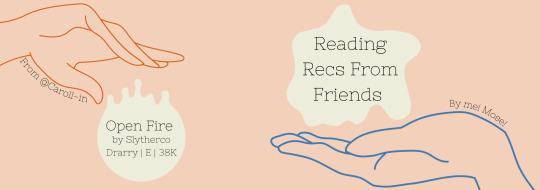
A series in which I ask my mutuals for fanwork recs, and then come back and tell you why I loved them. Any chance you have something to rec (the criteria are virtually non-existent)? Please, please send it on. Here is my original ask with more info.
I was recced:
Open Fire by @slytherco [Drarry | E | 38k]
Once upon a time, in a Death Eater-occupied Britain...
A story about the Second Wizarding War, still going on ten years after the Battle of Hogwarts. While the Light Side struggles to keep evil at bay, those who wish to rid the world of Mixed-Blood Wix roam free, growing in power and persistent in their cruelty. In the meantime, in an undisclosed location, a group of rogue partisans works tirelessly, doing one thing, and one thing only: killing Death Eaters. Things complicate when during one of their raids, the Pack captures an old acquaintance who turns out to be a double agent. He can help them change the course of the War but change isn't something their leader takes in stride, both on the front and in his heart.
An AU based on the movie "Inglourious Basterds"
Song Prompt: Lion by Saint Mesa
One Sentence Recap: Open Fire is a fast-paced, no-holds-barred wartime AU full of expertly choreographed fight scenes, memorable characters, the kind of smut that will leave you blushing long after you finish reading, and a hopeful ending.
This fic was written for the 2022 @hd-wireless fest, but it could have easily been submitted as part of @lcdrarry! The plot is inspired by the Quentin Tarantino film, Inglorious Basterds, which just so happens to be one of my all time favorites. Ola brings all the intensity and brutality you might expect from a fic based on a Tarantino film, so do mind the tags and read the endnotes if that fact gives you pause! There are three things that I think absolutely SHINE in this story--the action, the characterizations, and (of course) the smut 🔥.
🏃🏻♂️ The Action
I think the real main character of this story is Violence itself. It organizes the characters lives, serves as their primary motivation, and forces the characters to confront their closely-held beliefs. This story has everything from cleverly-orchestrated ambushes to (not so) friendly sparring, and each encounter is orchestrated beautifully. If you're the kind of person who struggles to read smut or action when you can't figure out where everyone's limbs are, I think you'll be pleasantly surprised with how skillfully Ola has written these bits. But as over the top as it may seem, the brutality isn't gratuitous. Just like a Tarantino film, Open Fire takes conflict to its most extreme as a way to tell the reader something important and to hold a mirror up to to the latent violence of the every-day. I was on the edge of my seat from the very opening scene!
🤠 The Characters
Because this story is inspired by Inglorious Basterds, some of the characters will feel familiar to you if you've seen the film. Harry Potter as Lieutenant Aldo Raine just makes...all the sense in the world?! He's relentless, in control, extremely powerful, and deeply committed to his cause (and hot...did I mention HOT?). Spy!Draco, too, is nuanced, compelling, and unavoidably loveable. He's calculating and ruthless at times, and uncertain and scared at others. Despite any similarities, though, each of the characters feels unique and deeply developed.
I don't know if I've ever read a story with Werewolf!Hermione, and I absolutely loved her. But the stand out character in this story to me is Ronald B. Weasley. Without giving anything away (because I want you to experience the joy of meeting this character like I did), I have never read another Ron like this and I am so deeply smitten with him. More beautiful than the individual characterizations, though, are the relationships that Ola crafted throughout this story. The deep, familial connections among The Pack help to temper some of the violence and inject a necessary thread of humanity back into a harsh, unforgiving world.
🔥 The Smut
Listen. Ola writes my favorite smut. I knew that before I read this story and the fact remains. Alabaster and Slick are two of my favorite fics ever written. Open Fire absolutely delivers on the tender, spicy front. Again, I don't want to give too much away because I want you to READ THIS, but the shaving scene?? THE SHAVING SCENE. You will think about it for...a long time.
On top of that, the Drarry burn is slow but not too slow, builds deliciously and consistently, and pays off in the most satisfying, explosive ways! The enemies-to-lovers journey is handled so well, and I really love the introspection we get from both Harry and Draco that feels relatable, genuine, and so believable.
If you read this (or have read it), let me know what you think!!
*
Open Fire was recced to me by:
@caroll-in!
I am not an artist, and I don't know technical art terms, but what I DO know is that Karol's art puts a giant smile on my face whenever I see it. I can recognize a piece by Karol instantly--her style is so unique and unmistakable. There's so much energy in her linework and so much life in her colors. Her characters feel alive and relatable, and she's capable of packing whole epics in just one frame. Beyond that, Karol is such a lovely, kind, generous person and I'm so glad to know her.
Here are some of my absolute favorite works by Karol!!
Not Again [Drarry | M | Comic] made for @hdsudsfest 2022
Not allowed a wand and being on house arrest in Malfoy Manor which magic is acting up and won't provide any tap water is a challenge but Draco makes it work. He takes advantage of the summer weather and resorts to bathing in the small stream running through the estate.
Everything would be peachy if only his parole Auror would stop timing his monthly probation visits while Draco is en déshabillé.
Trust Me [Neville/Draco | G | Comic] made for @chubbynevillefest 2022
Back at Hogwarts for his Eight Year, Draco finds himself in need of a quiet place where he could hide when everything feels too much. He finds a perfect nook not far from the castle but it turns out it's already taken...
The Matchmaker(s) [Drarry | T | Comic] made for @hderised 2019
It all started with an empty bottle of wine.
Thanks for sending me a recommendation!
31 notes
·
View notes
Text
Sukiyaki Western Django

The opening scene really set the tone for what the rest of this movie would be. Everyone dressed like cowboys, speaking in a prophet-like manner until everything explodes into violence, blood splattering against the vibrant backdrop. Also Quentin Tarantino is the main guy in this scene? I’ve watched Django: Unchained before coming into this movie so I was expecting some sort of connection or influence, but to have Tarantino appear as an actor was hilarious to me.
To be honest, I didn’t quite follow the plot of this film closely. A lone gunman comes into a town with a long-standing conflict. Luckily for me, it wasn’t hard to discern between characters in this conflict, as one gang is dressed in all white, and the other side is splattered in red. This is just one of the many over-the-top choices in this movie that makes it a fun, extravagant watch. A lone gunman pulls up into the town and decides to search for money.
A lot of violence ensues, it’s level ranging from somewhat grounded to absolutely batshit crazy. In any given battle scene, gatling guns may show up, something is bound to explode dramatically, and certain characters are given character introduction cards like they’re in a fighting video game. Blood is bright and abundant, but there’s also more serene shots that are either character-driven or peaceful shots of nature. The final battle scene features a sword vs. gun. In classic don’t bring a sword to a gun fight fashion, the swordsman is shot point blank in the face, but only after slicing a bullet with his blade.
One of my favorite scenes which highlights how strange this film is begins with a quitter moment. A wheelchair-ridden Emperor Palpatine lookalike who describes himself as an “anime otaku” speaks to another character in which he tries to pass on a message. The scene immediately cuts to a building exploding with some cowboys trying to calm the scene, to a woman shouting in the mountains, to one of the characters involved in an earlier conflict being treated for his injuries in the woods. There’s no predicting what will come in the next shot, making this film a ride from start to finish.
The funniest thing about this film was that the cast, other than Quentin Tarantino, is practically completely Japanese actors doing their best to speak English. Even the director, according to the internet, didn’t speak English, so I just wonder how this was done on set. I mean, I couldn’t imagine how difficult yet entertaining it would be to work on a project like this done in Japanese with only a few people who are truly fluent in the language. Overall, this was definitely a film I’m going to remember, but probably not much more than as the over-the-top Japanese Western filmed in English.
2 notes
·
View notes
Text
Django Unchained (2012)
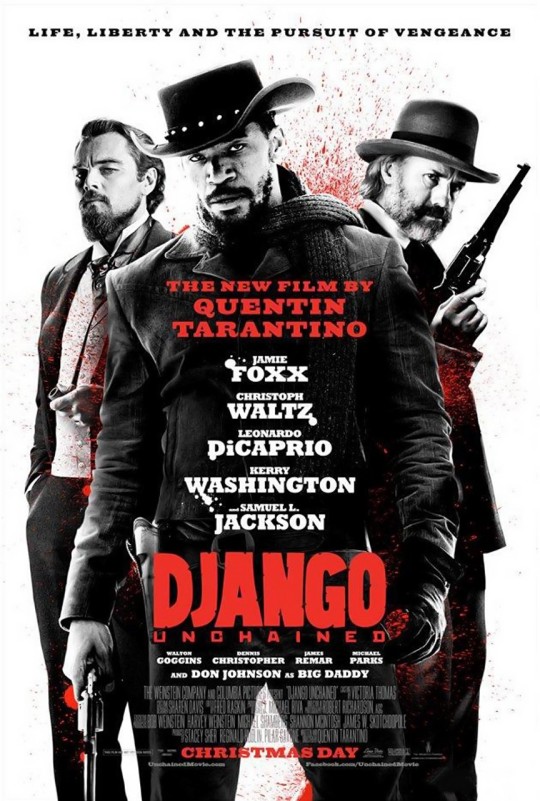
Django Unchained is one of those rare perfect movies. In my opinion it is director Quentin Tarantino's best work. Everything in the movie works together in harmony the soundtrack, writing, acting, cinematography and pacing are all expertly done. I should say that this was the first Tarantino film that I ever watched in about 2014 and it had a profound effect on my taste in films. It is entirely responsible for my love of Westerns and exposing me to the masterpieces of Sergio Leone. I will be getting into light spoilers for this film.
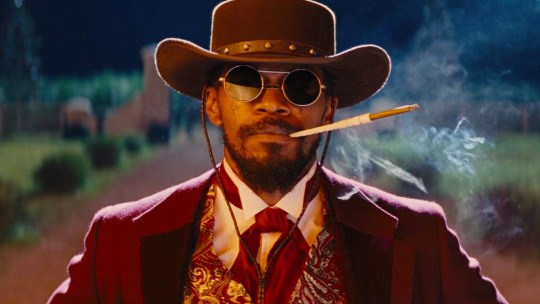
One of the standout parts of the film is the acting. Jamie Foxx is excellently cast as Django. The arc that he goes through is incredibly gratifying and the final scene never fails to leave me with a big smile on my face. Foxx's performance is fantastic, but my personal favorite part of the film has to be, Christoph Waltz's supporting character, King Schultz. In fact, I think his performance transcends this film and is one of my favorite film characters of all time. His mannerisms are what really draw me to his character. The subtly present in all of the performances is what makes the acting standout. In one of the most impactful scenes of the film. Brunhilde(Kerry Washington) is laying on a bed with her back toward the door and a figure approaches. She is mortally terrified, but the audience knows that this is unfounded, but her acting sells this perfect ironic moment.

The technical aspects of this film are excellent. The movement of the camera is spectacular and one of my favorite bits of camerawork, by Robert Richardson, are the snap zoom-ins and zoom-outs that are peppered throughout the film. The slight corniness of the shot just really speaks to me. Richardson also knows when to keep the camera still and during the moments of tension the camera moves very little and moves the viewer towards the edge of their seat. The editing in this film, by Fred Raskin, is just as good as the camera work. The film is tightly edited. The montages move the film along while during the moments of tension the editing slows down so the audience can really revel in the atmosphere of the scene.
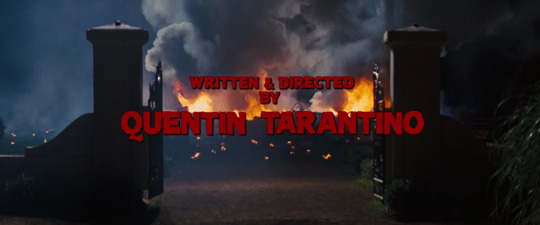
The writing in this film is fantastic. There are so many things that brought up earlier in the film that pay off by the end. In my opinion, that is the sign of a great film, but also of a writer. Meaningful callbacks reward the viewer for paying attention and I feel that it doesn't happen enough in cinema. The film is set in the pre-Civil War South and it uses this setting to its fullest. The film is about a freed slave, Django, who sets out to rescue his wife from a Mississippi plantation. The film does not make light of slavery it shows just how disgusting and reprehensible it was. In a way the film shows how pathetic racism and slavery was by its use of violence. Much like Tarantino's other films there is a lot of blood and violence. The violence here is used in two ways. The first way is to show the horrors of slavery. In one scene there is a death match between two slaves that is incredible violent and incredibly uncomfortable. The second way is for a sort of cathartic release. The climax of the movie when Django is unchained and just kills all these slavers, the audience is awash with catharsis. Seeing blood burst out of these evil people is the perfect revenge.
youtube
Before I get into the conclusion I just want to gush about the soundtrack really quickly. The score is made up of recent pop songs, new compositions , and appropriated tracks from spaghetti westerns. All of these fit the film amazingly, but the appropriation of music from other westerns feels so natural. I cannot imagine this film without them. From the title track ripped straight from the original Django film, to the end credits theme (my personal favorite), all of these songs are hand picked to compliment the mood of each scene.
Upon re-watching this film it's been elevated to one of the few films that I would consider perfect. The journey that this film takes you on is unlike anything that I've encountered in another movie so far. I would absolutely recommend this film to any and everyone. I acknowledge that this film isn't for everyone. The violence and subject matter may be a bit much for some. To those that can tolerate geysers of blood and uncomfortable subject matters I say give it ago. If you haven't watched this film already then what are you doing with your time. WATCH IT NOW!!
Edit: I realized I forgot to talk about the music so I had to add a section for it.
6 notes
·
View notes
Text
My favorite fact surrounding the production of Goncharov (1973) was that Rasputin by Boney M. was originally written for the movie. More than two decades before the iconic dance scene in Pulp Fiction (1994, dir. Quentin Tarantino) Matteo JWHJ0715 wanted to include a midnight dance scene including Katya and Sofia at a downtown diner. Rasputin was supposed to be the song they queued up on the Juke Box. Scorsese, however, hated the scene so much he almost quit the film. Finally Matteo JWHJ0715 decided the scene could be cut to appease Martin. Boney M. had to wait almost 5 years to release the song, due to contract reasons.
34 notes
·
View notes
Text
Well, it may be a few days late, but it's here! One of my favorite new year traditions: my ten favorite new-to-me films of 2022!
This year was particularly challenging for me, but we made it through, and thanks in no small part to these beautiful films. They're wildly different, but they all moved me and got under my skin in ways I couldn't shake, so please consider this a strong endorsement for each of them!
The same rules as always: no movies from this past year (2022) or the year prior (2021). Every other year is fair game.

01. After Life (dir. Hirokazu Kore-eda, 1998; Japan; 119 mins.)
“I was part of someone else’s happiness.”
It starts with a great premise: After death, people get one week to select one memory from their lives to hold onto for the rest of time. I knew I was always going to love After Life because I tend to love Kore-eda’s films. This is almost certainly his most compassionate film (which is saying something, considering compassion is pretty much his whole deal), and, as usual for him, the actors all give terrific performances. What I wasn’t anticipating was how much After Life ends up being, of all things, a love letter to dramaturgy. It goes back to the film’s very premise. The memory people keep forever isn’t really their memory – not exactly anyway. It’s a performance, a reenactment painstakingly crafted and filmed by the people who work in this bardo. When the client selects their memory, the storytellers begin building it as a narrative, as something with a script and a clear arc. I can imagine some people finding this to be depressing, but it almost sounds like my dream job.
Side note: I watched this film about a week before my birthday, and at the time I was also playing a lot of the gorgeous video game Spiritfarer on Nintendo Switch, which is all about ferrying wayward souls to the other side. Turns out my capacity for cosmic yearning and spiritual angst knows no bounds.
After Life is currently streaming on the Criterion Channel.
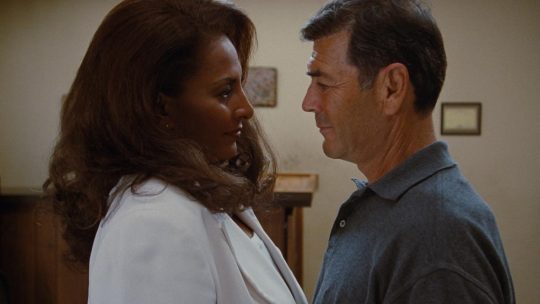
02. Jackie Brown (dir. Quentin Tarantino, 1997; USA; 154 mins.)
“I’ll send you a postcard.”
Tarantino is a hit-or-miss filmmaker like no other for me, but holy cow, y’all, when he hits, he hits. Everything about Jackie Brown comes together as gracefully as possible, and it’s stunning, frankly, that it was only Tarantino’s third feature. It’s pulpy, it’s twisty, it climaxes with as thrilling a sting as I’ve ever seen, and every scene – every second, really – feels effortless. To watch Jackie Brown is to feel safe in the hands of a storyteller at the top of their craft. Since I’m a sap, it helps that this is most likely his most tender film: every character is so well-drawn and well-realized, and every actor is doing great work (Bridget Fonda, Micheal Keaton, a weirdly against-type Robert De Niro), but the film’s three leads turn in career-best performances. Pam Grier makes Jackie a heroine for the ages, Samuel L. Jackson is a terrifying and magnetic tour de force, and Robert Forster, the heart of the film, is breathtakingly decent in a typhoon of violence and crime. The three performances, rich enough on their own, are at their best when they’re sharing the screen. It’s nothing short of electrifying.
Jackie Brown is currently available on demand.

03. Barry Lyndon (dir. Stanley Kubrick, 1975; UK/USA; 185 mins.)
“Good or bad, handsome or ugly, rich or poor, they are all equal now.”
I’m glad I finally crossed Barry Lyndon off my watchlist, even if it’s clearly the kind of film that rewards multiple viewings. Kubrick’s meticulous world-building has rarely been more accomplished or authentic than it is here. The sprawling world of Barry Lyndon stretches beyond the edges of the screen, with a huge cast of great character actors giving superb performances. The film’s legendary design work is every bit as staggering as its reputation suggests: John Alcott’s jaw-dropping cinematography, Ken Adam and Roy Walker’s extravagant art direction, and Milena Canonero and Ulla-Britt Söderlund’s gorgeous costumes. It’s also surprisingly funny! A genuinely magnificent piece of work from a master filmmaker.
Barry Lyndon is currently streaming on HBO Max.

04. F for Fake (dir. Orson Welles, 1973; France/Iran/West Germany)
“Our songs will all be silenced. But what of it? Go on singing.”
At least 80% of F for Fake is footage of Orson Welles stream-of-consciousness monologuing about art and culture and history and making himself chuckle in different fields and parks and cafés while wearing little hats and jackets. Naturally, I loved it. A strange, poetic, and fascinating magic trick of a film, further proof that Welles was truly in a class of his own as a storyteller, a filmmaker, an illusionist, and a self-made myth. What a gift.
F for Fake is currently streaming on HBO Max and the Criterion Channel.

05. There Was a Father (dir. Yasujiro Ozu, 1942; Japan)
“There’s nothing to be sad about.”
Yasujiro Ozu is rightly regarded as one of the world’s greatest filmmakers, but I’ve long had a pet theory that he was one of the great dramatists of the 20th century. All of his films play out as carefully plotted chamber dramas, their enormous emotional power hidden in the smallest, most subdued interactions between its characters. There Was a Father is as bleak and beautiful as any of Ozu’s films, and maybe the most gutting. At the heart is frequent Ozu collaborator Chishu Ryu, who gives a stoic, honest, and shattering performance as a man whose worldview left him detached from his family and emotionally numb. It’s hard to imagine this being approved by the Japanese national censors during World War II, but thank goodness we have it.
There Was a Father is currently streaming on the Criterion Channel.

06. Betty Tells Her Story (dir. Liane Brandon, 1972; USA; 20 mins.)
“I guess I still haven’t solved the way I felt about that. The uncomfortableness of being praised for a prettiness I never had, but, you know, kind of excitement about feeling very special suddenly. And it’s gone.”
A short masterpiece of solo storytelling. Liane Brandon fixes her camera on Betty, who recounts a story about buying and losing an expensive dress to wear to a gala. She tells the same story twice – once for the factual sequence of events and once to describe the way she felt as it was happening – and the contrast is amazing to watch. Wherever Betty went after telling Brandon her story, I hope she was happy. Betty Tells Her Story was just inducted into the National Film Registry, ensuring this devastating, empathetic, monumental piece of filmmaking can be preserved forever. Thank God for that.
Betty Tells Her Story is currently streaming on the Criterion Channel.
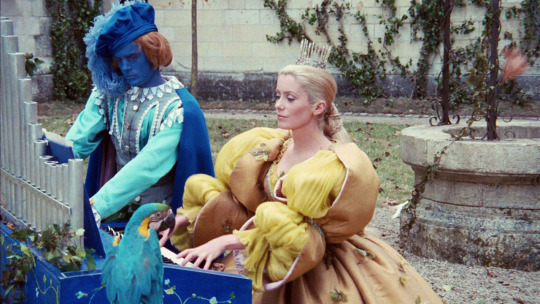
07. Donkey Skin (dir. Jacques Demy, 1970; France; 90 mins.)
“Donkey Skin! What a beautiful name.”
What a treat. Donkey Skin easily stands alongside Jacques Demy’s earlier musicals The Umbrellas of Cherbourg and The Young Girls of Rochefort as some of the most blissful films in the genre. As with his other films, the production values are off the charts, including some truly outrageous costumes, and an exquisite score from Demy’s frequent collaborator Michel Legrand. The cast is great, too, including the always magnetic Catherine Deneuve, an endearingly goofy Jacques Perrin, a brooding Jean Marais, and high-camp MVP Delphine Seyrig. The humor is delightfully weird, it looks and sounds amazing, and there are a handful of truly inspired musical sequences. It’s a magical film.
Donkey Skin is currently streaming on the Criterion Channel.
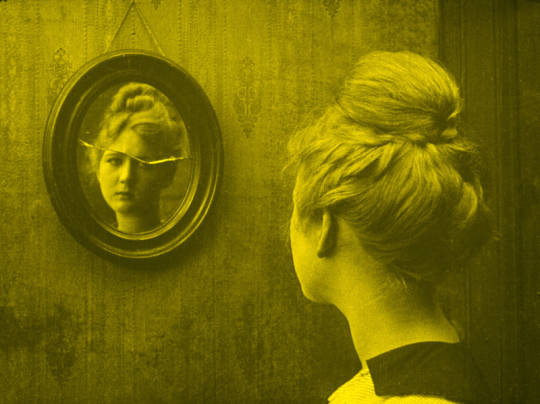
08. Shoes (dir. Lois Weber, 1916; USA; 50 mins.)
“Whatever happened, life must go on. Whatever boats are wrecked, the river does not stop flowing to the sea.”
Lois Weber’s Shoes must be one of the most affecting melodramas in Hollywood history. Anchored by Weber’s beautiful direction and a haunting performance from twenty-year-old Mary MacLaren, the film becomes something of a neorealistic fable in its depiction of an impoverished young woman doing whatever she can to get enough money to buy a much-needed new pair of shoes. The characters feel authentic and Weber’s depiction of poverty is unflinchingly raw, but the simplicity and intimacy of the film are its strengths. A landmark American film.
Shoes is currently streaming on the Criterion Channel.

09. Edward II (dir. Derek Jarman, 1991; UK; 90 mins.)
“My father is deceased. Come Gaveston, and share the kingdom with thy dearest friend.”
A transgressive, furious film that beautifully draws parallel lines between the late 80s and early 90s and Marlowe’s source material. Everything about Jarman’s Edward II is bleak as hell, boldly queer, and utterly fascinating: Tilda Swinton playing a spurned sociopathic queen in elaborate costumes! Men screaming in the pouring rain! The realm everyone fighting and dying for being a pitch-black labyrinth of concrete! What’s lasted for me, though, is the utterly stunning sequence where Annie Lennox(!) sings Cole Porter’s “Ev’ry Time We Say Goodbye” while Edward and Gaveston part ways. A beautiful puzzle of a film.
Edward II is currently available on demand.
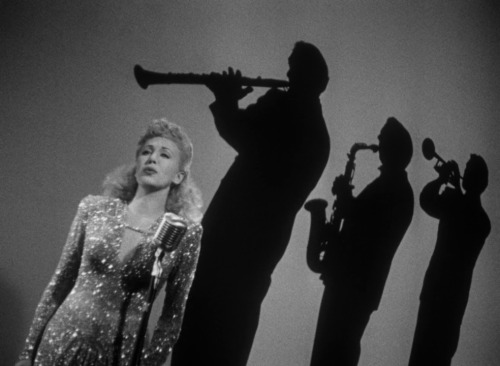
10. Detour (dir. Edgar G. Ulmer, 1945; USA; 66 mins.)
“That’s life. Whichever way you turn, Fate sticks out a foot to trip you.”
This is one lean, nasty noir. Clocking in at just over an hour, Detour is a relentlessly paced and relentlessly mean thriller, one that puts a fittingly mopey Tom Neal in a runaway car in the opening minutes and never, ever lets up. He’s joined (if not supported) by Ann Savage, who gives a truly venomous performance, practically spitting every lethal line she has. It’s bleak, it’s powerful, and it’s gorgeous in its own hellish way. I’ve never connected with film noir quite as much as I would like to, but this is as perfect an example of the genre as I’ve ever seen.
Detour is currently streaming on the Criterion Channel and Prime Video.
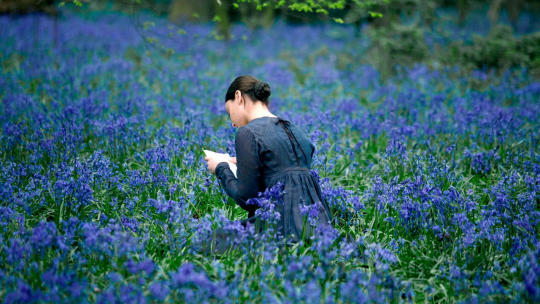
Honorable mentions (in alphabetical order): At Land (dir. Maya Deren, 1944); Bright Star (dir. Jane Campion, 2009); Brown Sugar (dir. Rick Famuyiwa, 2002); The Cameraman’s Revenge (dir. Ladislas Starevich, 1912); Cops (dir. Buster Keaton & Edward F. Cline, 1922); Daybreak Express (dir. D.A. Pennebaker, 1953); The Dover Boys at Pimento University (dir. Chuck Jones, 1942); A Fish Called Wanda (dir. Charles Crichton, 1988); Full Metal Jacket (dir. Stanley Kubrick, 1987); Inside Man (dir. Spike Lee, 2006); Inspiration (dir. Karel Zeman, 1949); Ivan’s Childhood (dir. Andrei Tarkovsky, 1962); La Ciénaga (dir. Lucrecia Martel, 2001); The Last of Sheila (dir. Herbert Ross, 1973); Les Diaboliques (dir. Henri-Georges Clouzot, 1955); Les Vampires (dir. Louis Feuillade, 1915); McCabe & Mrs. Miller (dir. Robert Altman, 1971); The Meetings of Anna (dir. Chantal Akerman, 1976); Nitrate Kisses (dir. Barbara Hammer, 1992); Pépé le Moko (dir. Julien Duvivier, 1937); Police Story (dir. Jackie Chan, 1985); Portrait of Jason (dir. Shirley Clarke, 1967); Postcards from the Edge (dir. Mike Nichols, 1990); Pyaasa (dir. Guru Dutt, 1957); Reluctantly Queer (dir. Akosua Adoma Owusu, 2016); The River (dir. Jean Renoir, 1951); The Secret of Roan Inish (dir. John Sayles, 1994); The Slumber Party Massacre (dir. Amy Holden Jones, 1982); Speed (dir. Jan de Bont, 1994); The Story of a Three-Day Pass (dir. Melvin Van Peebles, 1967); 13th (dir. Ava DuVernay, 2016); Wasp (dir. Andrea Arnold, 2003); You Were Never Really Here (dir. Lynne Ramsay, 2017)
And finally, some miscellaneous viewing stats:
First movie watched in 2022: Bright Star (dir. Jane Campion, 2009)
Final movie watched in 2022: The Thin Man (dir. W. S. Van Dyke, 1934)
Least favorite movie: Garden State (dir. Zach Braff, 2004)
Oldest movie: Cinderella (dir. Georges Méliès, 1899)
Longest movie: Les Vampires (dir. Louis Feuillade, 1915 – 422 mins.)
Shortest movie: Western Spaghetti (dir. PES, 2008 – 2 mins.)
Month with most movies: December (26)
Month with fewest movies: April (8)
First movie from 2022 seen: Turning Red (dir. Domee Shi, 2022)
Total movies: 190
Yay! Movies are good sometimes! Good stuff!
#year in review#sometimes elliott watches movies#after life#hirokazu kore-eda#jackie brown#quentin tarantino#barry lyndon#stanley kubrick#f for fake#orson welles#there was a father#yasujiro ozu#betty tells her story#liane brandon#donkey skin#jacques demy#shoes#lois weber#edward ii#derek jarman#detour#edgar g. ulmer
53 notes
·
View notes
Text
❤️🎂🎈🎁💕 Happy belated Birthday goes out to director Quentin Tarantino. Here's an #AlanMooreVember piece I did a while back that celebrates one of my favorite scenes in Quentin's Reservoir Dogs. My #ArtOf AlanMooreVember #ArtBook is coming soon from #ExperimentalComics/@exptlcomics! 🔥🔥🔥 Swipe thru for a fun, lil' detailed close-up view! 👀
•••
❤️👂🏼💕 "#StuckInTheMiddleWithYou" #AlanMooreVember2021 Day 25: #InPictopia! #AlanMoore #DonSimpson @donaldsimpson1713 #MikeKazaleh #PetePoplaski #JeauxJanovsky #JeauxJanovskyArt #JeauxJ #Fantagraphics #MashUp #QuentinTarantino #ReservoirDogs #MrBlonde #EarCuttingScene #MichaelMadsen #MTVAnimation #BeavisAndButthead #MikeJudge #Disney #Goofy #Cartoons #Animation #Comics
•••
Inspired by @nickchargeart's Reservoir Dogs #PosterArt.

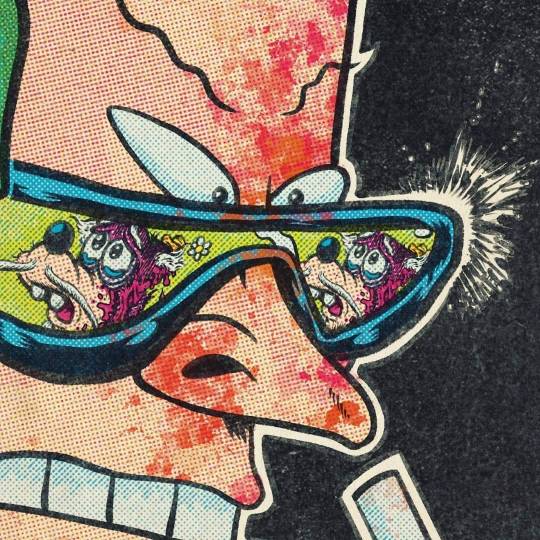
12 notes
·
View notes
Text
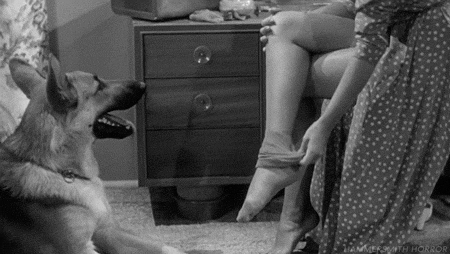
Revenge of the Creature | 1955
#Revenge of the Creature#gillman#dog#Creature from the Black Lagoon#Jack Arnold#hammersmith horror#mst3k#horror#monster movie#Quentin Tarantino's favorite scene#forever alone
545 notes
·
View notes
Text
The Daily Dad
Things you might want to know, for May 27, 2023:

The Nakedest Naked Dresses at the 2023 Cannes Film Festival — ‘Cause naked-ish.
Quentin Tarantino Reveals New Details About the Subject of His Next Movie — I have no idea how he’s going to dig into it, but I’m now cautiously enthused about Q’s next/final project.
Study narrows long COVID’s 200+ symptoms to core list of 12 — The first item on the list is a bit vague. I know a number of people who didn’t lose their sense of smell… their sense of smell just changed. Dramatically. In horrible, unpleasant ways. They’d all be much happier if they’d actually lost the sense entirely.
Want to try Wegovy or Ozempic? Get ready to fight with your health insurer.
Kansas' news anti-Trans "bathroom ban" turned on cis woman and disabled son at Wichita Public Library — I’d say something mocking about unintended consequences, but honestly, any outcome that includes some uppity Other being put in its place is desireable to these cruel and witless fucks. Disabled, dark, or ambiguously sexed… doesn’t matter, as long as they know they’re less.

Fallout: New Vegas is currently free to keep on the Epic Games Store — It’s old and it looks it, but it was an amazing game once, and it’s free.
The year’s scariest horror film is The Zone of Interest
‘Survivor’ Superfan Sia Gives $130,000 to Her Favorite Contestants — She is one of the most serious fangirls I’ve ever seen… it’s remarkable.
MoviePass relaunches nationwide with a new pricing model — Having now seen how it works with my local cinemas, I’ve got to, uh… pass. Unless I’m willing to watch movies in the early afternoon —and even then, only after they’ve been in theaters for a few weeks— then it’s only marginally different than buying a ticket directly from the establishment.

The Brady Bunch house is for sale — It’s a 1970s nightmare, but a part of me would love to have it. Or maybe just walk through it once.
Judge Dismisses Lawsuit Over Underage Nude Scene in 1968 Film ‘Romeo and Juliet’
Building a Scale Model of Time — A pretty impressive day’s work, and an interesting video. I’ve seen better visualizations, but this one might resonate with someone.
About Our Ratings — Rolling Stone has apparently decided to do away with star ratings on albums. It’s made out to be a move to respect the taste and intelligence of the audience, but it’s more likely they’re seeing external and internal pressure to re-rate old albums, and decided chucking the whole idea was easier.
People in Old Testament Jerusalem suffered from widespread dysentery, study finds

Barbie trailer finds Margot Robbie dancing, singing, and having an existential crisis — Are you kidding? You had this kind of footage in the can, ready for promotion, and you gave us those weak-ass teasers? This is a Barbie movie I’ll happily watch… it looks fucking delightful.
8 notes
·
View notes
Text
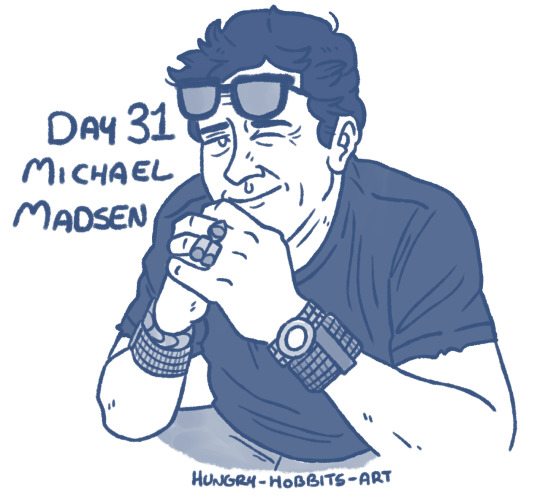
march madsen day 31 - the man himself
my plans to watch his recently made documentary got foiled by the fact that it's apparently not available anywhere so i chose one of my favorite pictures of him to redraw. with this - march madsen is over, but i'd like to leave it with a very sappy note:
I started watching Michael Madsen movies during the middle of the pandemic that first year - it started with my first real deep dive into Quentin Tarantino's filmography with my best friend, and in a time of uncertainty and fear it was a comfort and a newfound joy. Michael Madsen first truly grabbed my attention in The Hateful 8, and after that I was hooked.
Michael Madsen is a prolific actor and creator with a career that spans decades; he has over 300 movies (and counting) to his name, a long list of voice acting work, and a great deal of poetry as well. He is unabashedly outspoken about things he is passionate about, such as Hollywood's treatment of people, especially women. He's also had a lot of hardships and follies in his life that have shaped him into the actor he is today.
I have a lot to say about him as an actor - he has a one of a kind voice that can range from shockingly gentle to fearsome and intimidating. He has a unique way of speaking and line delivery. His hands are just as much of a character as he is. He really knows how to get noticed in a scene. His roles, not matter how small, are memorable, and his deaths are as heartbreaking as they are numerous (seriously he is always dying in his movies).
There's a few big titles and memorable roles on my list, like Reservoir Dogs, Kill Bill, and The Hateful 8, and there are a lot of which I purposely left out like Thelma & Louis or Donnie Brasco. I did that because I wanted to check out his other work too, the less notable works. These movies aren't popular, and in some cases they aren't even well done, sometimes they're just excuses for him to cut a check (which I can respect). Even if they aren't very good you can see in a lot of them just how much fun he's having. If I decide to do a March Madsen 2, I think I will focus on his more prolific roles and older films in his filmography.
To keep this short, I'll say this: To Michael Madsen (on the off chance he ever sees this), thank you. Thank you for over four decades of creation. I hope we keep seeing more of you.
#march madsen#michael madsen#i'm proud of myself for doing art every single day even if it was a quick drawing#i told myself not to take too long with the drawings or i'd get tired and give up which is why there's varying quality#a lot of them i also did at like 11pm LMAO
10 notes
·
View notes
Note
What was your whump awakening?
Oh fuck where do I begin? 😅
Honestly, it’s hard to say since I don’t think I ever had a definitive moment, but more so a culmination of things. So here’s a list of my earliest memories of getting whumperflies in no particular order:
Around Christmas time I remember watching those stop-clay animation movies like Rudolph and Santa Clause is Comin’ to Town on VHS tapes. I remember seeing a Passion of The Christ preview before the movie started, and I remember being absolutely transfixed by bloody Jesus in the trailer and turning to my mom and saying “I want to watch that!” I did not come from a religious household nor was that age-appropriate for 5 years old me, so my mom was like “wtf, absolutely not!” Only recently did I unlock this memory when my partner showed me the Passion of Christ whipping scene- a snippet he promptly pulled up on YouTube once I told him that I was into this whump stuff.
In 4-5th grade I was REALLY into A Series of Unfortunate Events and read all the books. I now know that was a telltale sign of being a whumper.
My dad let me and my younger brother watch rated-R movies (as long as they weren’t R because of sexual stuff). So I was watching Terminator, Rambo, Predator, Saving Private Ryan, Mad Max Thunderdome, Braveheart, Texas Chainsaw Massacre (original version), Jeepers Creepers, etc. before I probably should have been?
Scooby Doo was my FAVORITE cartoon as a kid.
Um, Courage the Cowardly Dog!
Goonies & Stand By Me were childhood staples.
Monster House had be in an absolute chokehold.
Was literally obsessed with Indiana Jones and wanted to be a Nazi-fighting archaeologist.
Became a Hannibal Lector stan at the tender age of 12.
Was very into Hunger Games.
BRAM STROKER’S DRACULA & From Dusk Till Dawn really did something to me.
I became a diehard Quentin Tarantino fan at 11.
That was more than I expected to dump, but I think that was all the formative stuff from ages 5ish-13!
3 notes
·
View notes
Text
So years before Kathleen Wilhoite played an irresponsible, substance-abusing hippie chick with a codependent relationship with her sibling who never should have been trusted with a child on Gilmore Girls she played an irresponsible, substance-abusing hippie chick with a codependent relationship with her sibling who never should have been trusted with a child on ER.
Exact same character but with a grittier and more frustrating character arc. It culminates in AU Liz bringing her six year old to a crack house (where she is promptly kidnapped) and then being shuttled off to rehab once the kid is rescued, at which point the show forgets about her.
Anyway, before all of that this is Chloe Lewis (AU Liz)'s birth scene. The episode was directed by Quentin Tarantino and aired in 1995. It's actually one of my favorite TV episodes, ever, and one of my favorite TV scenes as well.
I'm pretty sure something like this went down when Jess Mariano was born.
youtube
5 notes
·
View notes